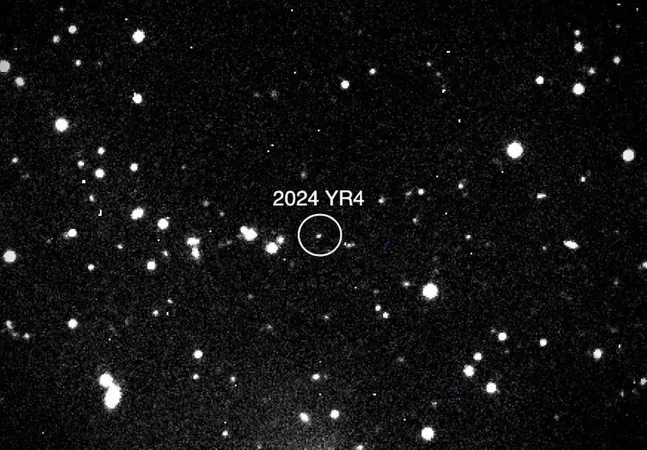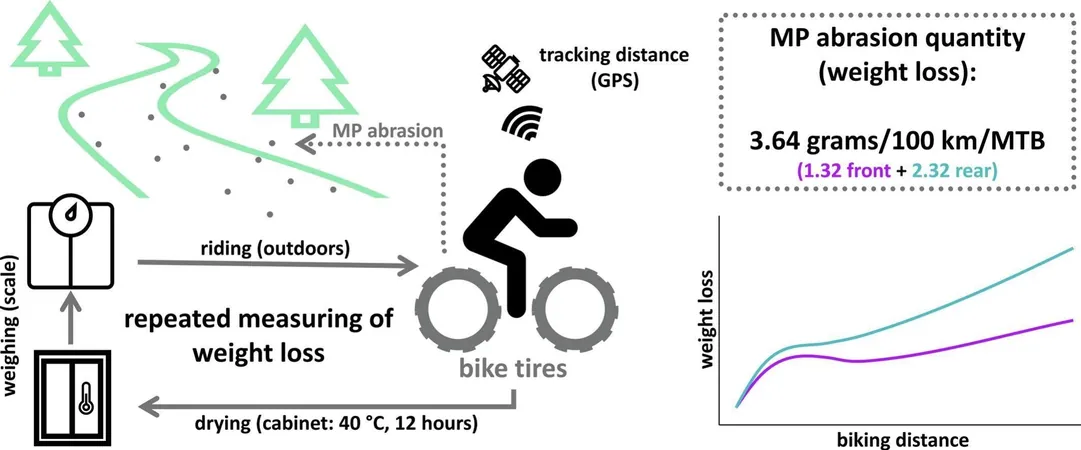
Asteroid 2024 YR4: From Earth Threat to Possible Moon Collision – What You Need to Know!
2025-03-31
Author: Wei
In a thrilling twist to the story surrounding Asteroid 2024 YR4, recent updates from major space agencies indicate that this ominous object, which once posed a 3.1% risk of striking Earth, may instead collide with the Moon.
Utilizing the advanced capabilities of the James Webb Telescope, astronomers have gained new insights about the asteroid and its trajectory. According to Julia de León, a co-author of the study and an expert at the Canary Islands Institute of Astrophysics, the revised data suggests that there is now a 2% chance of the asteroid impacting the Moon.
"While an impact with the Moon wouldn’t be harmful to us on Earth, it would provide a remarkable opportunity to witness a lunar collision and the subsequent effects," de León commented eagerly. "There have been countless small impacts on the Moon over time, but this would be our first observation of a significant collision involving an object larger than 50 meters."
Previously, 2024 YR4 gained international attention earlier this year when both NASA and the European Space Agency (ESA) released alarming predictions about its potential to impact Earth on December 22, 2032. However, as the scientific community conducted further observations, the likelihood of a collision with our planet diminished to nearly zero.
The size of Asteroid 2024 YR4 has been more accurately determined through James Webb’s observations, revealing it to be approximately 60 meters in diameter. This figure is significant as it exceeds the 50-meter threshold that triggers attention from the Space Mission Planning Advisory Group, a UN-formed panel focused on devising strategies to mitigate threats from near-Earth objects.
De León emphasized that, should the asteroid hit the Moon, it could still entail substantial ramifications—potentially generating destruction over a radius of 80 to 100 kilometers. She underscored the importance of awareness, drawing parallels to the infamous Chelyabinsk meteor, a 20-meter rock that unleashed energy equivalent to 35 Hiroshima bombs when it entered Earth's atmosphere in 2013, causing significant harm despite its relatively small size.
The planetary defense community’s shift from anxiety over a possible Earth impact to anticipation of a Moon collision encapsulates a significant change in tone. "I genuinely hope it hits," stated de León enthusiastically. "We can observe the impact using both ground-based telescopes and space observatories. This could be a groundbreaking moment for science."
Looking ahead, astronomers plan to utilize the James Webb Telescope once more in May to further analyze Asteroid 2024 YR4 and fine-tune the assessment of its potential lunar impact. The world watches with bated breath, not only for the fate of the asteroid but for what this could mean for our understanding of celestial collisions and their effects. Stay tuned, as the story of 2024 YR4 unfolds further!





 Brasil (PT)
Brasil (PT)
 Canada (EN)
Canada (EN)
 Chile (ES)
Chile (ES)
 Česko (CS)
Česko (CS)
 대한민국 (KO)
대한민국 (KO)
 España (ES)
España (ES)
 France (FR)
France (FR)
 Hong Kong (EN)
Hong Kong (EN)
 Italia (IT)
Italia (IT)
 日本 (JA)
日本 (JA)
 Magyarország (HU)
Magyarország (HU)
 Norge (NO)
Norge (NO)
 Polska (PL)
Polska (PL)
 Schweiz (DE)
Schweiz (DE)
 Singapore (EN)
Singapore (EN)
 Sverige (SV)
Sverige (SV)
 Suomi (FI)
Suomi (FI)
 Türkiye (TR)
Türkiye (TR)
 الإمارات العربية المتحدة (AR)
الإمارات العربية المتحدة (AR)